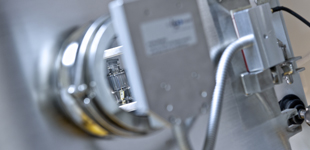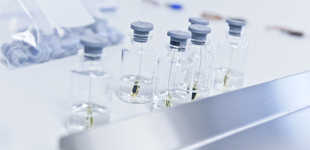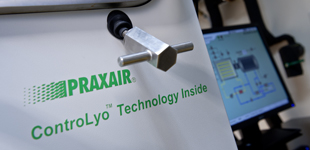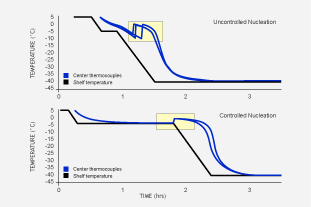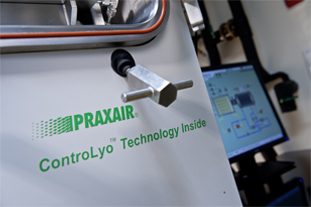ControLyo™ Nucleation On-Demand Technology
Relevance & Measurement Concept Behind This Technology
Ice nucleation is a stochastic event. The degree of supercooling prior to the onset of nucleation depends on various factors, such as solution properties, process conditions and environmental factors. The nucleation temperature is of integral importance since it determines the number of ice nuclei formed during the ice nucleation step and thus the number and size of ice crystals in the frozen material. Relatively high nucleation temperatures are desired because they generate larger ice crystals, which result in larger pores upon sublimation. These larger pores can dramatically reduce the mass transfer resistance of the cake. As a result, a shorter primary drying time can be obtained.
The variability in ice nucleation temperatures between laboratory and manufacturing scale is a serious problem for the scale-up of freeze-drying cycles. While supercooling may be as low as ca. -20°C in a clean laboratory environment, nucleation temperatures as low as -40°C have been observed in GMP production freeze dryers. As a result, a product processed with a cycle developed in the laboratory might require much longer to complete primary drying in production which, in turn, results in endpoint detection problems and compromised final product quality attributes.
The concept of the ControLyo™ nucleation on-demand techology (PRAXAIR Inc., Danbury, CT, USA) involves the pressurization of the freeze dryer chamber with an inert gas (e.g. nitrogen or argon) to 193 kPa. Subsequently, a rapid (i.e. within 3 seconds) depressurization of the chamber to a pressure of ca. 14 kPa is realized which induces immediate nucleation in all vials of the batch (Figure 1). The mechanism is, however, not yet fully understood. It has been speculated that either the gas in the product chamber undergoing expansion during depressurization will cool and the cold gas contacting the surface of the metastable liquid in the vial might induce nucleation, or that depressurization may cause local evaporation of some surface liquid and the resultant evaporative cooling may trigger nucleation. Whatever mechanism, the procedure has already been demonstrated to work reliably in all scales of freeze drying equipment. With regard to laboratory scale equipment, this technology is currently only available on the SP Scientific Lyostar™ 3 freeze dryer platform (Figure 2).
Key Features
- ControLyo™ leads to a significant increase of average pore size in the inner product morphology which, in turn, reduces the resistance to water vapor flow and therefore, primary drying time.
- Can improve visual appearance of the final cake (elimination of cake cracking or crown formation).
- Can minimize freezing-induced protein aggregation.
- Reduces vial breakage when processing crystalline products.
- It is a scalable technology which eliminates the obstacle of different nucleation temperatures obtained for vials in laboratory and production scale freeze dryers, a #1 scale-up issue in freeze-drying.
Why Do We Use This Technology?
ControLyo™ nucleation on-demand technology gives us an opportunity for further cycle time reduction while preserving (or even improving) the desired product performance characteristics. The technology is particularly valuable for optimization of freeze-drying cycles for established drug products in the small molecule segment (vial or bulk). Moreover, having the capability of controlling nucleation opens a new chapter for robustness testing protocols and Quality by Design in freeze-drying.
Further Reading and Resources:
Short technical notes on ControLyo™ may be obtained in our Scientific Insights section. Recent research articles on ControLyo™ are highlighted in the GILYOS Scientific Library. For more product-related information, please visit the website of the manufacturer: PRAXAIR Inc.



